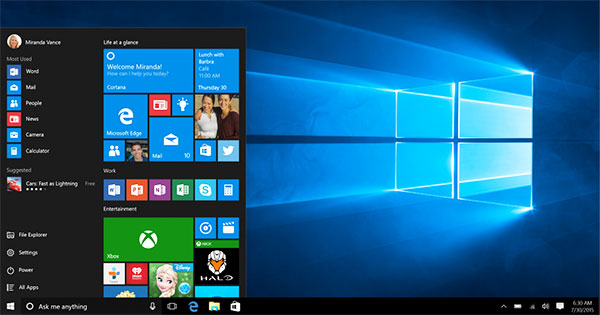Microsoft on Wednesday began offering Windows 10 as a free upgrade to Windows 7 and 8 users in 190 countries, as promised. Eligible users began receiving taskbar notifications, beckoning them to begin the migration to Windows 10.
To encourage migration, Microsoft has asked the first flock of digital pilgrims to use the hashtag #UpgradeYourWorld and to tag a nonprofit organization to their posts. The one that receives the most votes will be designated as the 10th nonprofit in the program — Microsoft chose the first nine — and it will receive US$500,000 and other support from Microsoft.
The goal of the Upgrade Your World campaign is to inspire and empower people to improve the world around them, Microsoft said in a statement provided to TechNewsWorld by spokesperson Carly Olsen.
“We believe that technology and innovation combined with helping others has the power to affect positive change on a global scale,” the company said. “Our partnership with these organizations is one of the many ways we are working to make a difference and empower others to do the same.”
See You on the Other Side
Windows 10 has improved through ongoing feedback from more than 5 million Windows Insiders, and it is Microsoft’s most-tested OS ever, the company said in another statement provided by Olsen.
“A benefit of delivering Windows 10 as a service means we offer ongoing innovations and security updates, continuously improving Windows 10,” Microsoft said. “Your Windows 10 device will get better and better, but Windows 10 is ready — today.”
With the new OS offered to Windows 7 and 8 users for free, the only reason to hesitate is concern over compatibility issues, suggested Rob Enderle, principal analyst at the Enderle Group.
“The more obscure hardware and software will move to the new platform slowly, and some may not move at all, so if there is a compatibility flag and no easy way to replace the problem component, then stay,” he told TechNewsWorld. “Otherwise, for security and reliability reasons alone, the reasons to upgrade easily overcome the reasons to stay.”
The situation in the enterprise space is different. With millions of dollars potentially at stake, the decision to chart a course to a new OS always requires consideration of a variety of issues.
Business Moves
With the introduction of previous versions of Windows, it was common for large companies to wait roughly a year before taking a chance on a new OS.
With Windows 10, however, widespread enterprise migration could begin in about six months, according to Thomas Koll, CEO of Laplink Software. His company already has clients scheduled to begin the move in August.
“Enterprises have waited a long time to refresh, because they did not want to go to Win 8,” he told TechNewsWorld. “I believe strongly that the refresh curve will be steeper than with other OS refresh cycles.”
Win 10 will drive revenue for Microsoft Office and its cloud offerings, which is very important to the company from a business standpoint. Win 10 is a big piece in its cloud-mobility strategy.
“To be successful with that, Microsoft needs to move users rapidly to Win 10,” Koll said. The company “will want to get the Enterprise and SMB market solidly into their strategy, and stop any bleeding due to the lack of excitement. The Win 8 top management is gone. Nadella and team want to prove that they learned, listened, and are successful with their strategy.”
Safe and Sound
With the mass migration now under way, there remains the question of what awaits Windows users on the other side of the upgrade. While consumers and IT departments work to learn all they can about the new OS, hackers undoubtedly already have begun their Windows 10 education and are looking for ways to undermine it.
Windows 10 is the next big target, said AVG Senior Security Evangelist Tony Anscombe.
One Windows 10 feature that already concerns him is Wi-Fi Sense, which automatically connects users to crowdsourced WiFi networks and accepts an access point’s terms on their behalf.
“While these are potentially convenient features, they bring inherent security and privacy risks … . Not all free or open WiFi networks are secure, and others can be deliberately malicious,” Anscombe told TechNewsWorld. “Accessing the Internet on these hotspots can lead to your traffic being intercepted by an attacker, known as a ‘man in the middle’ attack.”
Users should disable the feature, at least for now, and seek safeguards beyond Windows 10’s native defenses, he recommended. Also, consumers should check the compatibility of their software before packing up and setting out for Windows 10.





















































Windows 10 does not even have the limited Easy Transfer program anymore. You will need to use a tool like PCmover from Laplink to get apps, data, and settings off your old PC and onto your new Windows 10 computer.